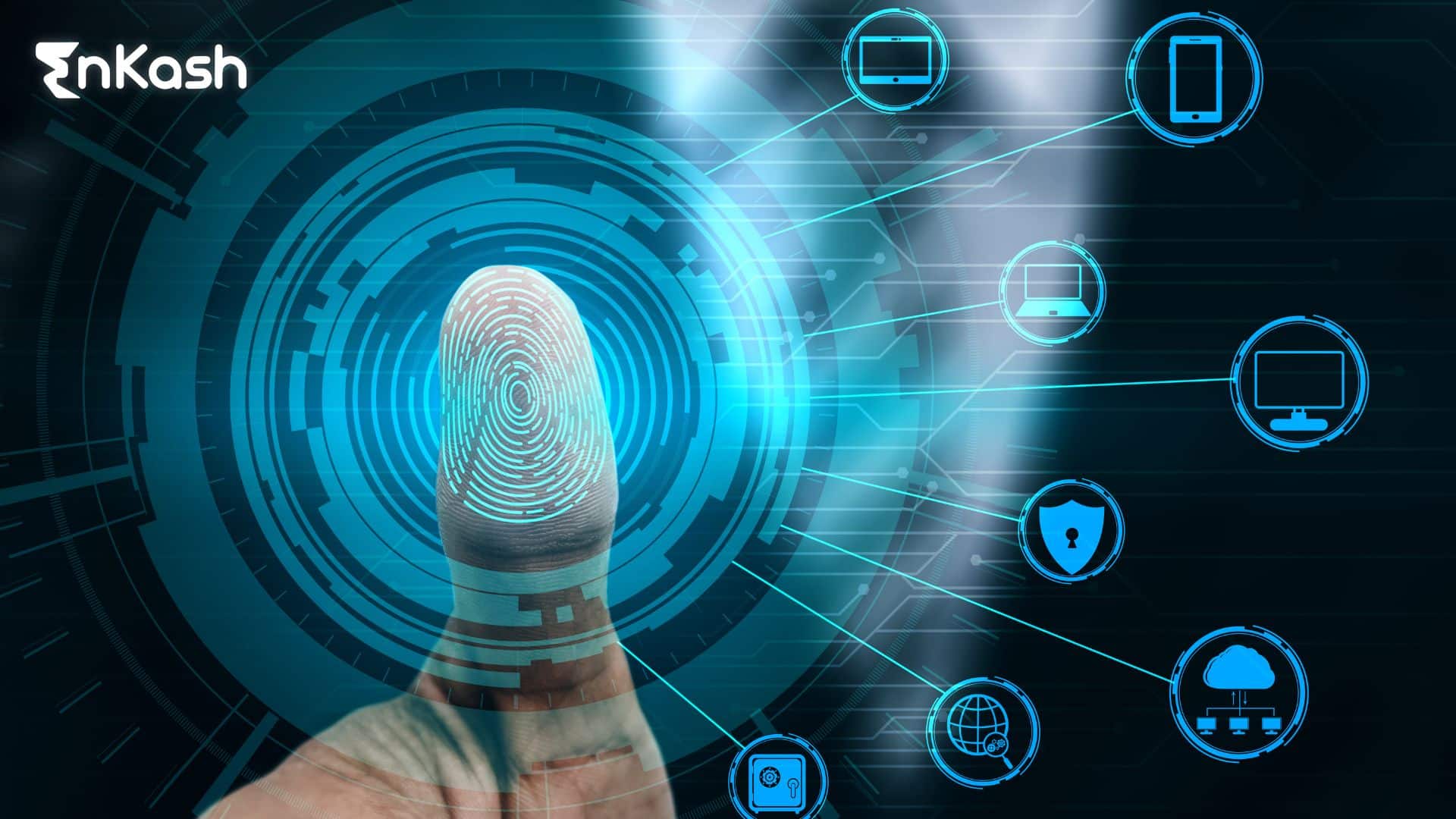The way we pay is evolving rapidly. In a world that values speed, ease, and safety, traditional payment methods are starting to feel slow and outdated. Shoppers today want smooth experiences where they don’t have to enter passwords, type OTPs, or search for cards. This shift has brought biometric authentication into the spotlight. So, what is biometric authentication? In simple terms, it means using a person’s unique physical traits to confirm their identity. Think fingerprints, face scans, or even the way someone speaks. These personal identifiers are being used to make payments faster and more securely.
Businesses are now adopting biometric verification at checkout to simplify how people complete their purchases. Whether it’s unlocking saved cards with a fingerprint or confirming a transaction with facial recognition, the goal is to reduce friction while keeping fraud at bay.
This blog will explain what biometric authentication is, how it works during checkout, its benefits and risks, and why it may soon become the standard for digital payments.
Read more: How Secure Payment Gateways Safeguard Your Business
What Biometric Authentication Means in the World of Payments
To understand how biometric authentication fits into digital payments, it helps to first look at the basic idea behind it. Biometrics refers to measurable traits that are unique to each individual. These include fingerprints, facial structure, iris patterns, voice tones, and even the rhythm of how someone types. When these traits are captured and matched correctly, they confirm a person’s identity.
So, what is biometric authentication in the context of checkout systems? It is the process of using those unique physical characteristics to allow someone to complete a payment. This form of identity verification is already being used across mobile wallets, banking apps, and online shopping platforms. Instead of entering a password or PIN, the user can simply scan their face or tap a fingerprint sensor to approve a transaction.
This leads to the term biometric verification, which refers to the action of matching a live biometric input with the stored data on file. If the match is successful, the system allows the transaction to proceed. This form of verification is fast, secure, and highly personal.
The phrase biometric verification meaning goes beyond simple identity confirmation. It represents a shift in how businesses approach user authentication. Unlike passwords, which can be forgotten or stolen, biometric data is tied to the individual in a way that is much harder to duplicate. This makes it a valuable tool in fighting online fraud.
In the world of payments, biometric authentication is no longer a futuristic idea. It is becoming an everyday part of how people access their money and complete transactions with confidence.
Fingerprint to Palm Vein: Exploring the Tech Behind It
Biometric payments use different types of technologies to verify a user’s identity during checkout. Each method relies on unique physical features that are difficult to copy or fake. Here are the most widely used forms of biometric authentication:
Fingerprint recognition
- One of the most common methods in digital payments.
- Users place their finger on a sensor, usually on a phone or biometric card.
- The system compares the fingerprint to what is already stored.
- This method of biometric verification is fast and accurate.
Facial recognition
- Uses a camera to scan the structure of a user’s face.
It checks the spacing between eyes, bone structure, and other facial details. - Commonly found in mobile devices and high-end checkout systems.
- Adds a layer of security with ease of use.
Iris and retina scans
- Relies on the pattern inside the eye to identify a person.
- Very precise but needs special hardware.
- Mostly used in banking, healthcare, or high-security settings.
Palm vein mapping
- Scans the internal vein layout of a user’s hand.
- Considered highly secure as it works with invisible features under the skin.
- While still emerging, it is being explored for its hygienic and secure potential in high-security environments and select retail pilots.
Voice recognition
- Captures the tone, pitch, and speaking style of the user.
- Useful in phone banking or voice-based apps.
- Adds convenience when other biometrics are not practical.
How the Checkout Journey Changes with Biometrics
The process of checking out online or in a physical store becomes faster and more secure with biometric authentication. Here’s how the flow is different compared to traditional methods:
No need for passwords or PINs
- Users can complete a transaction using a fingerprint or face scan.
- This removes the need to remember or enter credentials.
- The entire process becomes quicker and more seamless.
Faster access to stored payment details
- Platforms using biometric verification allow users to unlock saved card data instantly.
- The system checks the biometric input and unlocks the card for payment.
- This reduces the time spent filling forms or re-entering information.
Stronger security during high-value transactions
- Some platforms prompt for extra authentication on bigger payments.
- A second biometric scan may be used for extra confirmation.
- It adds safety without slowing the process.
Integration with mobile and UPI apps
- Apps allow users to verify and approve payments with built-in phone sensors.
- Facial or fingerprint recognition confirms identity before completing the action.
- Biometrics reduce the need for OTPs in some cases, particularly for recurring or tokenized transactions, depending on local regulatory guidelines.
Checkout becomes smoother for returning users
- Returning customers can approve repeat purchases with one scan.
- This helps merchants improve customer experience and reduce drop-offs.
Reduced fraud risk at every step
- Biometric authentication checks are personal and hard to fake.
- They help stop unauthorized access before the transaction is completed.
Read more: Payment Gateway Security Features
Real Use Cases Where Biometric Verification Works Best
Biometric authentication is already transforming how payments are handled across different industries. Here are key use cases where it brings real value:
Retail and supermarkets
- Shoppers can pay using a facial scan or fingerprint at the checkout counter
- Loyalty programs can be linked to the same biometric data
- This reduces queues and improves in-store service
E-commerce platforms
- Customers can approve payments instantly on mobile apps.
- Saved cards or UPI apps use biometric verification for order completion.
- It helps cut down payment failures and cart abandonment.
Food delivery and takeaway
- Mobile checkouts using biometrics make ordering quick and secure.
- Customers can confirm payment without switching apps or entering codes.
Banking and financial services
- Account logins, fund transfers, and bill payments can be verified biometrically.
- Biometric authentication adds another layer of trust in sensitive transactions.
Public transport and ticketing
- Biometric scans are used for entry, exit, and fare payment in metros and buses.
- This enables hands-free, ticketless travel for commuters.
Healthcare and pharmacy
- Prescriptions, reports, and payments can be verified using biometric verification.
- Patients avoid delays in access or billing.
Why Businesses Are Embracing It as the New Normal
Businesses across industries are adopting biometric authentication not just for its technical appeal but because it directly improves how customers pay, shop, and trust the brand. Here’s why it’s becoming the new standard:
Faster checkouts for a better user experience
- Customers can pay using a fingerprint or face scan without delays.
- There is no need to enter passwords, fill forms, or wait for OTPs.
This leads to higher satisfaction and fewer drop-offs during payment.
Reduced cart abandonment
- Many buyers quit the checkout when the process is too slow or complex.
Biometric verification removes extra steps, keeping users engaged until the transaction is done.
Stronger fraud prevention
- Unlike passwords, biometric traits cannot be guessed or reused.
- Transactions tied to a physical identifier make it harder for unauthorized access.
This lowers financial risk and chargebacks.
Fewer failed transactions and support calls
- Biometric systems reduce errors that happen during password entry or OTP failures.
- Businesses spend less time resolving payment issues.
Operations run smoother, and support costs go down.
Improved customer trust and retention
- Customers feel more confident when security is visible and easy.
- A platform using biometric authentication is seen as modern and trustworthy.
- This builds long-term loyalty and repeat visits.
Preparation for future regulations
- Compliance requirements are moving toward safer, faster authentication models.
- Businesses already using biometric verification are better positioned for what’s next.
Competitive advantage in the digital space
- A smooth and secure checkout builds a reputation.
- It becomes part of how users remember and recommend the brand.
The Gaps: What Still Needs Work in Biometrics
Even though biometric authentication offers speed and security, it’s not without challenges. There are several areas that still need improvement before it becomes flawless across all platforms.
Data privacy concerns remain high
- Biometric data is both personal and permanent
- If stolen, it cannot be changed like a password.
- Users are still unsure how platforms store and protect this sensitive information.
Spoofing and fraud risks still exist
- Advanced tools can try to fake fingerprints or face scans.
- Without proper liveness detection, systems can be tricked.
- Businesses need to invest in stronger fraud-prevention layers.
Not everyone can use every method
- Some users may have physical conditions that make certain biometric verification methods difficult.
- Facial recognition may fail in poor lighting or for users wearing masks.
- Voice recognition may not work well in noisy surroundings.
Lack of clear fallback options
- If the biometric scan fails, users must be given a secure and simple backup.
- Many platforms still do not handle this transition smoothly.
Trust in adoption is still building
- People are cautious about sharing biometric data.
- A better understanding of biometric verification meaning is needed to drive acceptance.
The Security Stack Behind Every Biometric Checkout
The safety of biometric authentication depends on how the system is built behind the scenes. It’s not just about scanning a fingerprint or face. A secure process includes many layers working together to protect the user’s data and the business’s reputation.
Encrypted storage of biometric data
- Biometric details are converted into secure templates.
- These templates are stored using strong encryption.
- Many systems now keep this data on the user’s device, not in the cloud.
Tokenization for payment details
- Payment card numbers are neither stored nor displayed. Instead, a unique token is generated and used during transactions
- Instead, a unique token is created and used during transactions
- This makes it harder for attackers to access real card information
Device-level security protocols
- Smartphones and tablets have built-in security chips.
- These chips store and process biometric authentication data separately.
- It adds another layer of protection even if the app or system is attacked.
Use of secure APIs and SDKs
- Developers use verified tools to connect biometric systems with checkout flows.
- These APIs are regularly updated for threats and performance.
- This ensures secure biometric verification at every touchpoint.
Compliance with global and local rules
- Systems follow PCI-DSS, GDPR, and local banking norms.
- This keeps both businesses and users protected under the law.
- Regular audits and updates are a key part of the security cycle.
Read more: Track Your Business’s Accounts Receivable Performance : Best Practices To Follow
The UX Advantage: Making Identity Invisible Yet Secure
While security is the foundation of biometric authentication, the user experience it offers is what makes it widely accepted. It removes friction without compromising on trust, making everyday transactions easier for people.
Instant identity confirmation
- Users can approve a payment in seconds using a fingerprint or facial scan
- There’s no need to type credentials or wait for OTPs.
- This makes the experience feel faster and smoother.
Less cognitive load on the user
- People don’t need to remember passwords or PINs.
- The system does the verification silently in the background.
- This leads to less frustration and fewer errors.
Natural flow across devices
- Whether shopping on a phone or tablet, biometric verification feels the same.
- Users become familiar with the process, which increases comfort and speed.
Effortless re-authentication for repeat customers
- Returning users don’t have to start from scratch.
- The system recognizes them quickly, improving engagement.
A sense of modern convenience
- Biometric authentication adds a premium, forward-looking feel to any platform.
- It reflects a brand’s focus on smart, user-first design.
Read more: Best Practices for Payment Gateway UI/UX Design
The Road Ahead: Trends Shaping Biometric Payments
The future of biometric authentication in payments looks promising. With better technology and changing consumer habits, new trends are already starting to reshape the checkout experience.
Smarter fraud detection through AI
- Advanced systems now detect fake attempts with real-time analysis.
- AI tools check for signs of spoofing and confirm that the input is genuine.
- This strengthens the overall security of biometric verification.
Biometrics in wearable devices
- Smartwatches and fitness bands are beginning to support biometric features.
- Users will soon be able to approve payments using a tap or a gesture.
- It brings faster access without relying on phones.
More secure public terminals
- ATMs, kiosks, and ticketing machines are now adding biometric authentication.
- This reduces the risk of card skimming and pin theft in public spaces.
Wider adoption in developing regions
- Affordable devices with built-in biometric tools are helping expand usage.
- Digital wallets are adding these features for first-time users.
Stricter compliance requirements ahead
- Governments and financial bodies are pushing for safer digital payment methods.
Conclusion: Smarter Identity is the New Checkout Standard
The way we confirm identity during payments is changing. Biometric authentication is no longer an add-on feature. It’s becoming the standard that people trust and prefer. By using a fingerprint, face scan, or voice pattern, users can complete payments with ease and confidence. Businesses that offer biometric verification stand out for making security simple and seamless.
It’s clear that the question is no longer what is biometric authentication, but how fast it can be scaled across platforms. As more people expect smooth and secure experiences, adopting biometric tools becomes a smart move. From reducing fraud to speeding up checkout, the benefits are real.
Still, the shift must be handled with care. Clear privacy rules, secure systems, and easy alternatives are important. When done right, biometric verification will reshape digital payments for the better, making identity safer, faster, and future-ready.








